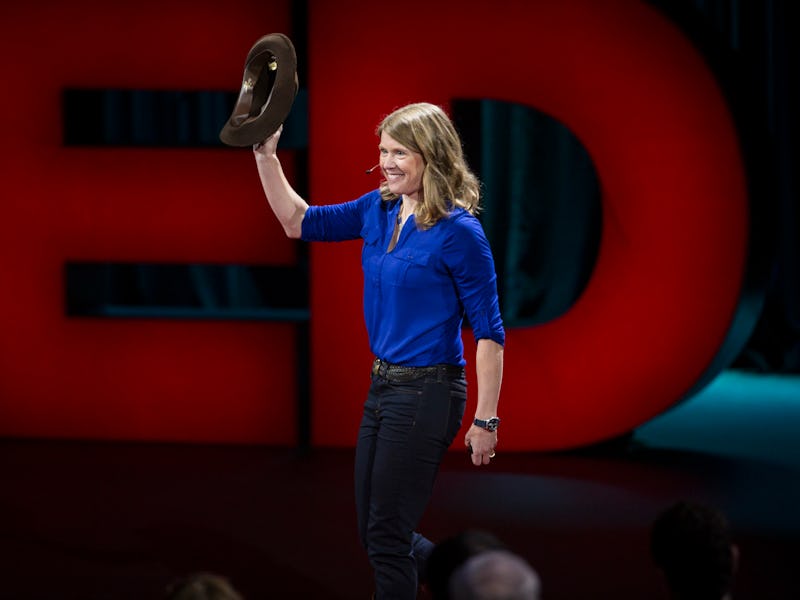TED Prize Winner Wants Us All to Be Space Archaeologists
Can a million-dollar prize find the human civilizations we've lost?

National Geographic explorer and TED fellow Sarah Parcak may have one of the coolest jobs in the world: space archaeologist. She scored the 2016 TED Prize in November, an honor that comes with $1 million and a huge platform to advocate for your work. On Tuesday, she announced what she’s going to do with all that cash — an ambitious plan to give all of us the tools to find and protect the most precious sites of history on Earth.
“I wish for us to discover the millions of unknown archaeological sites across the globe,” Parcak announced at Tuesday’s TED conference. “By creating a 21st century army of global explorers, we’ll find and protect the world’s hidden heritage, which contains humankind’s collective resilience and creativity.”
These “global explorers” will use the same algorithms as Parcak. She analyzes satellite imagery, trying to find the subtle clues of hidden man-made structures on Earth. Her prize money will fund a website that offers public access to these satellite images — the idea being that, with the help of smart tutorials, all of us citizen scientists can look for potential dig sites, too.
This NASA satellite image shows the hidden, ancient Egyptian city of Tanis.
Having thousands of eyes roving archaeological sites has another purpose, as well — Parcak hopes that people will not only watch out for hidden cities, but also for looting at existing sites. When she won the award, Parcak bemoaned the current state of archaeology: Looting, by ISIS at its most extreme, has become all too common.
“The last four and half years have been horrific for archaeology,” Parcak said, upon receiving the TED prize. “I’ve spent a lot of time, as have many of my colleagues, looking at the destruction.”
If finding ancient cities and watching for looters wasn’t thrilling enough, the site will be in a game format. Users will score points for discoveries — and high-scorers could be invited to archaeological digs. But the game won’t include exact historic locations, lest looters look to use the website for their own means.
For her part, Parcak is the most prolific of NASA’s archeologists. She’s used satellite mapping to find 17 previously unknown pyramids, 1,000 tombs, and 3,100 hidden settlements in Egypt. She’s even mapped Tanis — the long-lost Egyptian city, featured in Raiders of the Lost Ark.
“[Currently] archaeology is a slow and laborious process,” Parcak told Wired. Her goal? Nothing less than uncovering every forgotten site on the planet.